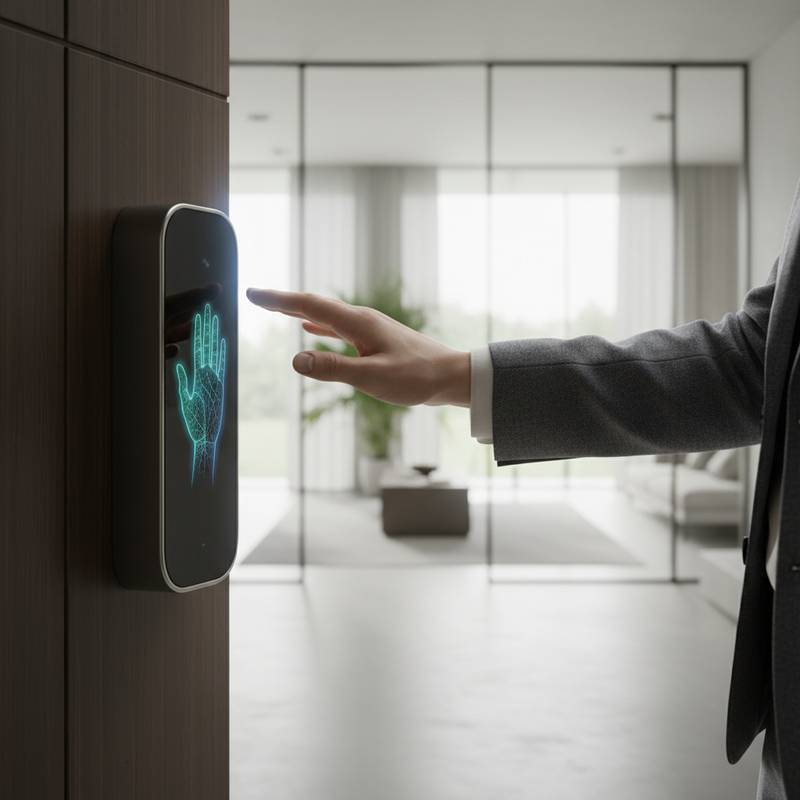Palm Recognition Transforms Keyless Smart Locks
Smart home security evolves with innovations that prioritize both ease and reliability. Palm recognition, previously limited to fortified facilities, now enhances residential smart locks. Homeowners gain immediate entry by presenting their palm, bypassing the need for keys, codes, or fingerprint pads. This advancement establishes a standard for seamless keyless systems.
Advancing Beyond Fingerprints in Biometric Security
Fingerprint-based locks often falter under conditions like moisture or grime. Palm recognition addresses these limitations through near-infrared sensors that capture subsurface vein configurations and surface contours. The process yields a secure, intuitive interaction that performs consistently, regardless of hand condition.
Experts in security emphasize the difficulty of replicating internal vein structures, which remain hidden from external view. This feature positions palm recognition as a leading choice for domestic applications. Response speeds surpass those of code entry or key manipulation, streamlining everyday access.
Key Reasons Homeowners Adopt Palm Recognition Systems
The primary appeal lies in its practicality. Consider returning home laden with packages; a quick palm presentation unlocks the door without setting down items or searching pockets. Families benefit from individualized profiles that track entries while supporting group use.
Data privacy stands out as a significant benefit. Local storage within the lock's hardware prevents the risks associated with remote facial systems. Current designs employ on-device encryption, ensuring users retain full authority over their information.
- Speed and Simplicity: Access occurs in under two seconds, ideal for busy schedules.
- Versatility: Functions in varied lighting and weather, unlike some optical methods.
- Customization: Assign temporary access for guests via app-linked profiles.
Practical Applications of Palm Recognition Locks
Leading lock producers incorporate palm sensors in high-end offerings. Hybrid configurations pair palm verification with PIN backups or mobile apps for redundant options. A prominent device employs 3D mapping alongside infrared detection, achieving recognition in moments under diverse conditions.
Users report consistent performance from low light to direct sun exposure. Beyond residences, this technology suits professional environments such as offices, where teams require efficient, key-free ingress. Expanding manufacturing lowers costs, broadening availability to average households.
Seamless Connection to Smart Home Networks
These locks extend beyond standalone operation by linking to comprehensive home automation. A palm unlock might activate interior lighting, set climate controls, or pause surveillance feeds. Such automation fosters an integrated routine tailored to user preferences.
Support for universal protocols enables interaction with diverse voice controls and hubs. This interoperability appeals to those building multi-vendor setups, avoiding vendor lock-in while promoting unified functionality.
Addressing Challenges in Palm Recognition Adoption
Emerging technologies encounter hurdles, including initial expense and data handling concerns. Developers counter these with robust encryption, clear usage guidelines, and user-friendly onboarding. Declining prices and increased awareness will drive wider acceptance.
Installation simplifies over time, with many units fitting standard deadbolts for minimal disruption. Homeowners upgrade existing setups affordably, easing the shift to advanced security.
Enhancing Daily Life Through Intelligent Access
Palm recognition elevates home protection to intuitive levels, aligning with natural movements. It combines accessibility, data security, and personalization for contemporary households. For users of connected devices, this lock completes a responsive living space.
Future developments promise broader integration, making palm-based entry a staple in smart residences. The gesture of extending one's hand unlocks doors and advances toward proactive, user-centric security.
